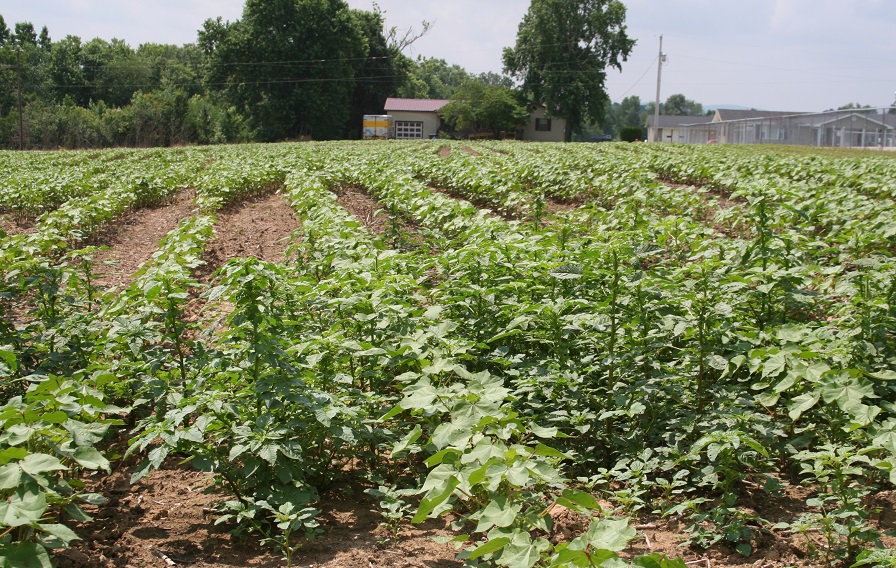High and Rolling Plains Trial Results Now Available
Just in time for cotton producers making variety selections for the coming year, Texas A&M AgriLife Extension Service agronomists in the High Plains and Rolling Plains have released their 2017 Replicated Agronomic Cotton Evaluation, or RACE, trial results.
Drs. Jourdan Bell in Amarillo, Seth Byrd in Lubbock and Emi Kimura in Vernon, all AgriLife Extension agronomists, recently released the results of their large plot, on-farm, replicated cotton variety trials, which are conducted annually to assist Texas cotton producers in remaining competitive in these regions.
“The High Plains encompasses the largest area of cotton production in the world, and it is only projected to increase in the near future,” Byrd said. “While it is impossible to represent every possible scenario in a production environment of this size, the ability to pool this data allows for the highest percentage of acreage to be represented.”
For the second year in a row, growers on the Texas High Plains produced over 5 million bales of cotton. And, planted acres in the Rolling Plains increased 15% compared to the average planted acres in 2015 and 2016.
Variety selection is one of the most important decisions a producer makes in all cotton producing regions, Bell said. In the northern High Plains region, however, it can be especially challenging as producers must pick varieties that perform well in the region’s narrow production window between planting and maturity, May-October.
Cool spring conditions at planting frequently result in reductions in early season vigor and seasonal growing degree day accumulation, she said. Consequently, region-specific variety trials evaluating early to early mid-maturity cotton varieties are necessary to provide producers unbiased comparisons of top-yielding varieties.
These RACE trials provide producers knowledge of varietal performance and stability under regional environmental conditions, the agronomists said. The 2017 production season saw many weather-related challenges across the High Plains and Rolling Plains.
The 2017 growing season was successful after timely rains enabled the crop to support and fill a heavy fruit load developed over the first two to three months of the season, but it wasn’t without early setbacks, Byrd said.
Many areas struggled to find good planting conditions due to spells of cool, wet weather followed by days of hot, dry, windy conditions, making crop establishment a challenge, he said.
And a late spring blizzard May 5 delayed cotton planting until mid-May across much of the Texas Panhandle, Bell said.
In the Rolling Plains, in-season precipitation varied across the trial sites from 8.7 inches to 16.7 inches, Kimura said. The moisture from May to October was 2-6 inches less than 2016.
“Many producers in the region suffered from lack of moisture in late May to June for planting,” she said. “Then storms during the last week of September flooded many cotton fields, which accelerated the infestation of late bacterial blight. Although the late blight had minimum negative effects on final yields, some producers might have seen dead cotton plants at harvest.”
The first killing frost was a week earlier, October 27, than the traditional first killing frost in the Rolling Plains, which Kimura said was detrimental to the late-planted cotton.
She said she also saw minor herbicide damage in the Hardeman irrigated site and major herbicide damage in the Wichita irrigated site in July and August. Other issues included poor stand establishment in Childress, Dickens and Stonewall dryland trials due to lack of moisture.
“Overall, planting timing was critical, especially to dryland cotton production, to achieve high yield in the 2017 cotton growing season,” she said.
The southern High Plains region planted 17 RACE trials; the northern High Plains planted at seven, but only five locations were harvested; and the Rolling Plains conducted trials at 15 locations. A wide range of planting dates and seeding rates were used to reflect the different cultural practices of cotton producers to address issues specific to their location.
Results for the southern and northern High Plains trials and for the Rolling Plains trials are available online.
The RACE trials were in part funded by Plains Cotton Growers’ Plains Cotton Improvement Program, Cotton Inc., the Texas State Support Committee, Americot/NexGen, Bayer CropScience, Deltapine, CROPLAN Genetics and PhytoGen Cottonseed.








